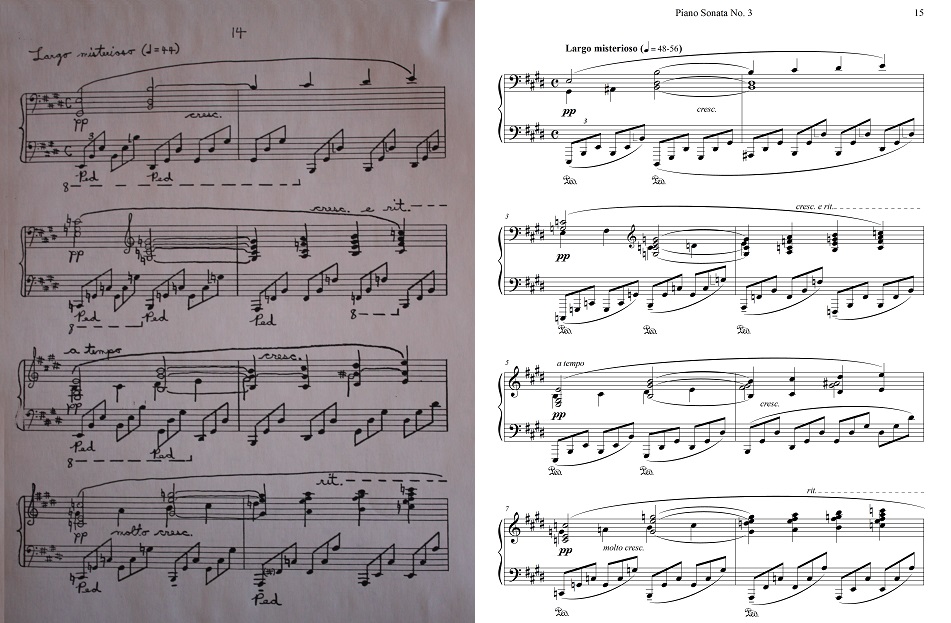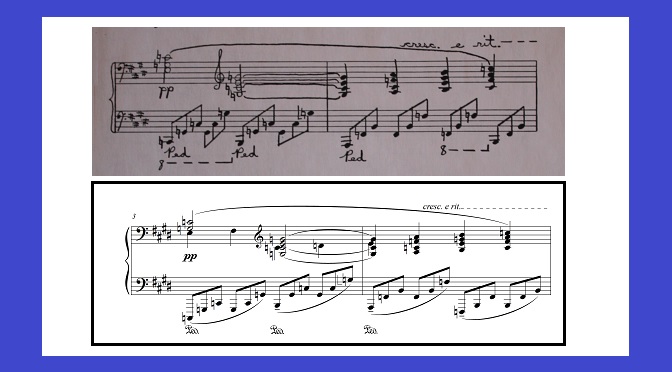Revising Piano Sonata No. 3
The original version of my Piano Sonata No. 3, composed in 1987, was the last significant work for which I wrote the final manuscript by hand. For all my subsequent major compositions, I used computer software to produce the final copies of my scores. Almost three decades later, in the latter part of 2015, I began to transcribe the work into Finale. In general, I tend to do some fine editing as I transcribe music into Finale, becoming more precise with regard to matters like phrasing, articulation, and dynamics. In the case of this sonata, however, I decided to make more significant changes, rewriting some passages and even extending one passage significantly in the last movement. The revision was substantially complete by the end of 2016.
This sonata is a stirring work, full of passionate Romanticism and dynamic energy. Unlike my second and fourth piano sonatas, both of which are single-movement compositions, Piano Sonata No. 3 is more conventionally divided into three movements. But it is strikingly unconventional in that the sonata-allegro structure — exposition, development, and recapitulation — is distributed across all three movements. The overall work is in F major, but because of its unusual structure, the first movement concludes in the remote key of E minor. This unusual tonal progression, however, makes sense when the work is heard as a whole. Tonally, neither the first nor the third movement makes sense when played independently, although the slow second movement can stand on its own.
The first page from that slow movement can be seen here, comparing the original handwritten version with the Finale revision:

The first fourteen bars of the movement are a transition, weaving together the principal theme of the previous movement (in augmented note values) with the melody to come. If you look closely, you will notice subtle differences between the two versions. The new version includes just a few additional very quiet passing tones which, when blended in the pedal, lend a more mysterious quality to the musical texture.
In January 2019, I finally produced a video recording of the revised sonata. The slow movement can be heard here and viewed with the score:

